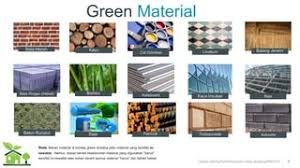What is Green non-toxic materials ?
Green non-toxic materials, also known as eco-friendly or sustainable materials, are substances that are produced and used in a way that minimizes harm to the environment and human health. These materials are typically sourced from renewable resources, have a reduced carbon footprint, and are designed to be recycled, reused, or biodegraded at the end of their lifecycle. They aim to reduce the negative impacts of traditional materials on ecosystems, air and water quality, and human well-being.
Examples of green non-toxic materials include:
- Bamboo: A rapidly renewable resource that can be used as a substitute for wood in various applications, such as flooring, furniture, and packaging.
- Cork: Derived from the bark of the cork oak tree, it is a renewable material used for flooring, insulation, and other applications.
- Recycled glass: Glass waste is processed and transformed into new products, such as countertops, tiles, and insulation materials, reducing the need for new glass production.
- Recycled plastic: Plastic waste is collected, sorted, and processed into new products, reducing the demand for virgin plastic and preventing it from entering landfills or oceans.
- Organic cotton: Grown without the use of synthetic pesticides or fertilizers, organic cotton is a more sustainable alternative to conventional cotton, which is resource-intensive and often treated with harmful chemicals.
- Natural fiber textiles: Fabrics made from renewable plant-based fibers like hemp, jute, and flax require less water and energy during production compared to synthetic materials like polyester.
- Low-VOC paints: Volatile Organic Compounds (VOCs) are harmful chemicals released by conventional paints. Low-VOC or zero-VOC paints are formulated to have reduced levels of these compounds, improving indoor air quality.
- FSC-certified wood: The Forest Stewardship Council (FSC) certifies wood products that come from responsibly managed forests, ensuring they are harvested in an environmentally and socially responsible manner.
- Bio-based plastics: These plastics are derived from renewable resources like corn, sugarcane, or algae, offering an alternative to traditional petroleum-based plastics with reduced environmental impact.
- Natural stone: Materials like granite, marble, and slate are natural, durable, and widely available, making them sustainable choices for construction and design.
Using green non-toxic materials helps promote environmental sustainability, reduce pollution, and support healthier living conditions for both humans and ecosystems.
Latest technology of Green non-toxic materials
It’s important to note that the development of new technologies is an ongoing process, and there may have been further advancements since then. Here are a few examples:
- Nanocellulose: Nanocellulose is a lightweight, high-strength material derived from cellulose fibers found in plants. It has potential applications in various industries, including construction, automotive, and packaging, as a sustainable alternative to synthetic materials.
- Bioplastics from algae: Researchers are exploring the use of algae to produce biodegradable plastics. Algae-based bioplastics have the potential to reduce reliance on petroleum-based plastics and provide a renewable and environmentally friendly alternative.
- 3D printing with sustainable materials: 3D printing technology is being used to create objects using sustainable materials such as biodegradable polymers, recycled plastics, and bio-based composites. This approach reduces waste and energy consumption associated with traditional manufacturing processes.
- Carbon-negative materials: Scientists are developing materials that actively remove carbon dioxide from the atmosphere during their production or use. For example, carbon capture and utilization technologies are being explored to incorporate captured CO2 into building materials like concrete, thereby reducing carbon emissions.
- Smart materials for energy efficiency: Advanced materials with properties that respond to environmental conditions can contribute to energy efficiency. For instance, smart windows can adjust their transparency to regulate heat and light transmission, reducing the need for heating, cooling, and artificial lighting in buildings.
- Sustainable insulation materials: Traditional insulation materials like foam and fiberglass can release harmful chemicals. Alternative options include insulation made from recycled materials like denim, cellulose, or wool, which offer better thermal performance and reduced environmental impact.
- Self-healing materials: Self-healing materials have the ability to repair damage autonomously, reducing the need for replacements and extending the lifespan of products. Research is ongoing to develop self-healing materials for various applications, including construction, automotive, and electronics.
It’s worth noting that the field of green non-toxic materials is rapidly evolving, and new technologies and materials are continuously being researched and developed. To stay updated on the latest advancements, I recommend referring to scientific publications, industry reports, and news sources focused on sustainability and materials science.





